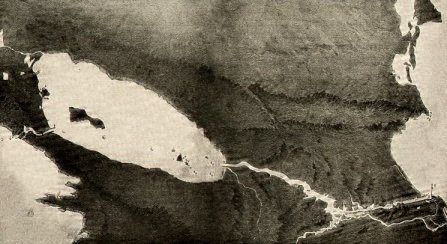Here we go again with another Nicaragua canal story. The first started in 1899. In the Making of a Nation the story emerges of why Panama became the location of choice. I always loved the story of how a little stamp from Nicaragua showing an exploding volcano swayed politicians to vote for Panama.
This in from the Jakarta Globe June 7, 2012
Managua, Nicaragua. China, Russia, Brazil and Japan are among six countries interested in funding a new $30-billion canal in Nicaragua linking the Atlantic and Pacific Oceans, the project coordinator said on Wednesday.
On Tuesday, Nicaraguan President Daniel Ortega submitted a draft bill to the legislature that details six possible routes for the proposed waterway, one of which would pass through the San Juan river that forms a common border with neighboring Costa Rica.
“We’ve had talks with Japan, China, Russia, Venezuela, Brazil and South Korea and everyone is interested” in contributing to the $30 billion mega-project, the plan’s leader Eden Pastora told local television.
He added that Nicaragua’s conduit would be “larger and deeper” than the Panama Canal, currently the only man-made shortcut allowing ships to cross between the Atlantic and the Pacific.
Feasibility studies are expected to cost $350 million while actual construction could hit $30 billion.
The idea of building a canal across Nicaragua dates back centuries, but was overtaken by the construction of the 82 kilometer Panama Canal.
In recent years, however, Nicaraguan governments have revived the concept as a way to promote development of the country, the second poorest in the Americas after Haiti.
The idea has led to some controversy.
In late 2010, Nicaragua sparked a diplomatic row with Costa Rica when it began dredging the San Juan River. The move led to Costa Rica accusing Nicaragua of invading a small island in the river. The dispute has gone to the International Court of Justice in The Hague.
The Panama Canal is currently undergoing a major $5.25-billion project to expand its choked capacity, set to be completed in 2014, which will allow some of the world’s largest ships to pass through.
The vital waterway handles five percent of world trade annually, and has hosted more than one million vessels since it was inaugurated in 1914. The United States handed over control of the canal to Panama on December 31, 1999.
It also generated a record $1 billion for Panama in the fiscal year 2010-2011, for a total of $6.6 billion since the United States handed over control more than a decade ago.
China and other countries are seen as keen to build a backup inter-oceanic shortcut route, if the numbers make sense.
